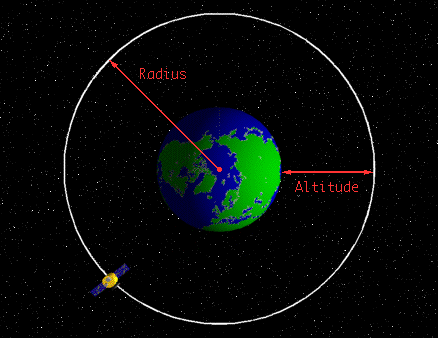

In 1609, Johann Kepler published his three laws describing planetary motion.
Soon after this, Isaac Newton postulated that there is a force of attraction between any two objects, called gravitation. In 1687, Newton then published his greatest work, Principia, which described the three laws of motion.
These laws form the basis for all we know about how an object's motion is affected by gravity. From all of these the formula for the orbital period of a spacecraft (or planet) can be derived.
The equation is:

where:
 = mathematical constant, 3.141593
= mathematical constant, 3.141593
 = gravitational parameter (a constant~398601
= gravitational parameter (a constant~398601  for Earth)
for Earth)
This equation can easily be solved. The radius is measured from the earth's center. Therefore, the altitude of the orbit is just (Radius - radius of theEarth). The Earth's radius is roughly 6378 km, so the altitude of a geosynchronous orbit is about 35,786 km.

This document was excerpted from: http://liftoff.msfc.nasa.gov/sb/academy/rocket_sci/orbmech/formulas.html